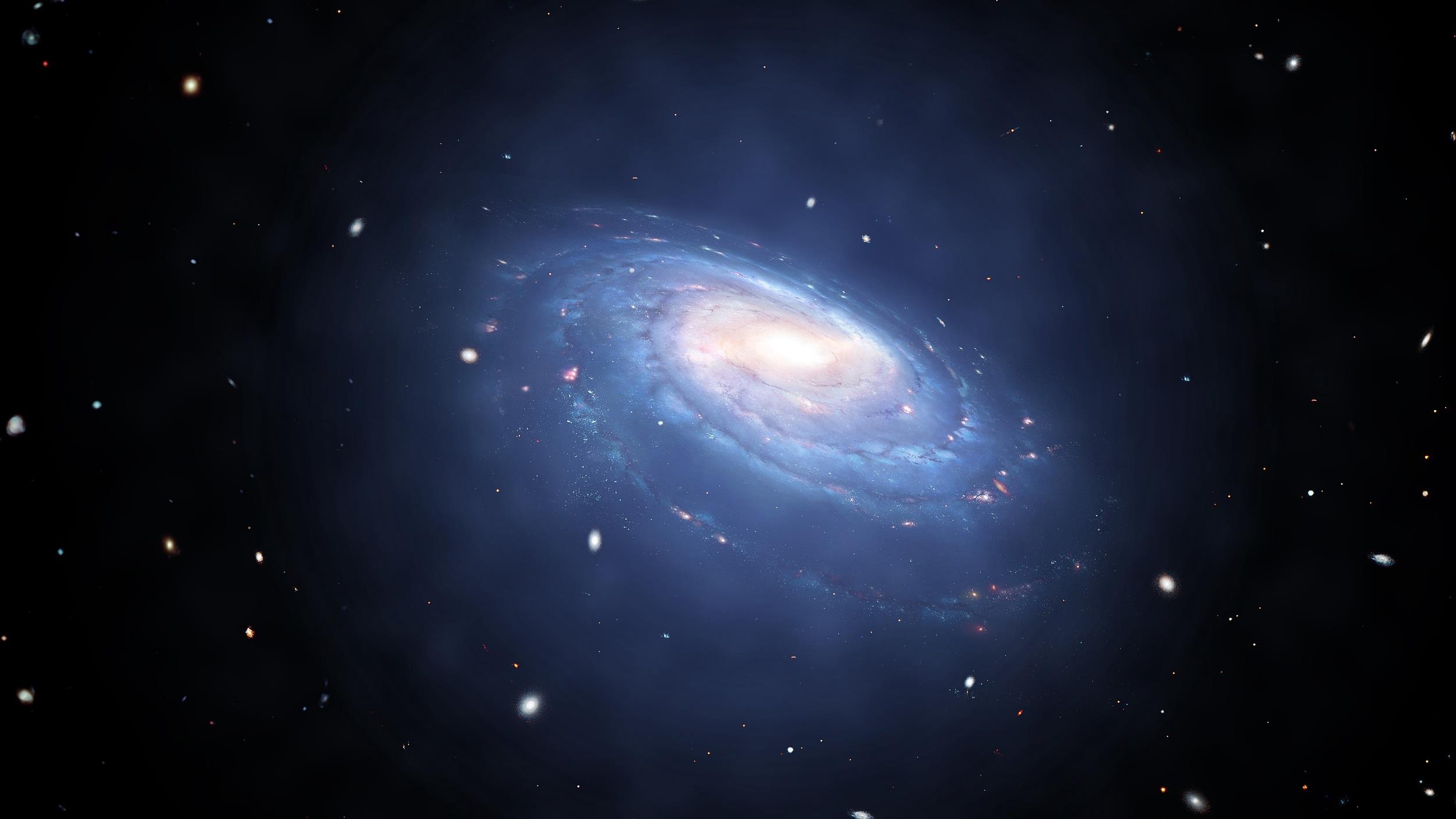WASHINGTON, Oct. 14 (CGTN) -- Astronomers used a massive cluster of galaxies as an X-ray magnifying glass to spot a tiny dwarf galaxy in its very first stages of star formation nearly 9.4 billion years ago.
This is the first time that galaxy clusters have been used to magnify distant objects at X-ray wavelengths, according to the study published on Monday in the journal Nature Astronomy.
Astronomers have seen a blue speck of an infant galaxy, about 1/10,000 the size of the Milky Way, in the midst of churning out its first stars. It appears to be a bright blue arc as the supermassive, cosmically short-lived objects were emitting high-energy X-rays, according to the study.
"It's this little blue smudge, meaning it's a very small galaxy that contains a lot of super-hot, very massive young stars that formed recently," said Matthew Bayliss, a research scientist at Massachusetts Institute of Technology (MIT).
This galaxy is similar to the very first galaxies that formed in the universe, the kind of which no one has ever seen in X-ray in the distant universe before, according to Bayliss.
Scientists have used galaxy clusters as cosmic magnifying glasses, with a technique known as gravitational lensing. Galaxy clusters are so massive and their gravitational pull so strong that they can bend the universe and any surrounding light.
The light emitted by an object behind a galaxy cluster would be bent around the cluster and keep traveling toward the observer at slightly-different angles, finally giving rise to a "magnified" image.
Scientists previously used galaxy clusters to magnify objects at optical wavelengths, but never in the X-ray band because galaxy clusters themselves emit an enormous amount of X-rays.
Astronomers in the new study found a way to subtract the X-ray emissions of the galaxy cluster and then they identified two similar patterns of X-ray emissions around the cluster. Those two emissions, gravitationally bent by the cluster, can be traced back to a single, tiny dwarf galaxy from 9.4 billion years ago, when the universe itself was only about 4.4 billion years old.
The tiny galaxy hiding behind the cluster was magnified about 60 times, according to the study.
"Every galaxy had to start out in this phase, but we don't see a lot of these kinds of galaxies in our own neighborhood," said Bayliss. "Now we can go back in time, look in the distant universe, find galaxies in this early phase of their life and start to study how star formation is different there."
